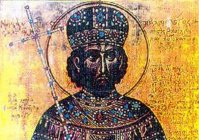
Worksheets and No Prep Teaching Resources
Reading Comprehension Worksheets
Ancient Rome

Ancient Rome
 Worksheets and No Prep Teaching Resources Reading Comprehension Worksheets Ancient Rome |
 Ancient Rome |
| edHelper's suggested reading level: | grades 9 to 11 | |
| Flesch-Kincaid grade level: | 9.96 |
|
The Break-up of the Roman Empire
By Vickie Chao |

|
 1 The Roman Empire was once a superpower. Back in the days of the early 2nd century, Emperor Trajan stretched the kingdom's territory to its maximum. After that, how to secure the frontier had become an issue that all the future emperors had to address. Because most of those emperors were not nearly as capable as Trajan, the Roman Empire was soon in trouble. By the 3rd century, the situation had grown so bad that this once formidable powerhouse was at the brink of self-destruction. During the period from 235 A.D. to 284 A.D. (often called the crisis of the third century, the military anarchy, or the imperial crisis), more than two-dozen emperors came and went. Out-of-control inflation brought the economy to its knees. And foreign tribes continued to harass the borders. Just as things could not get worse for the Roman Empire, relief finally arrived. In November of 284 A.D., Diocletian, a forceful Roman general, seized power and declared himself the new emperor. One of his earliest orders was to split the Roman Empire in two. He kept the eastern part and gave the western half to his colleague, Maximian.
1 The Roman Empire was once a superpower. Back in the days of the early 2nd century, Emperor Trajan stretched the kingdom's territory to its maximum. After that, how to secure the frontier had become an issue that all the future emperors had to address. Because most of those emperors were not nearly as capable as Trajan, the Roman Empire was soon in trouble. By the 3rd century, the situation had grown so bad that this once formidable powerhouse was at the brink of self-destruction. During the period from 235 A.D. to 284 A.D. (often called the crisis of the third century, the military anarchy, or the imperial crisis), more than two-dozen emperors came and went. Out-of-control inflation brought the economy to its knees. And foreign tribes continued to harass the borders. Just as things could not get worse for the Roman Empire, relief finally arrived. In November of 284 A.D., Diocletian, a forceful Roman general, seized power and declared himself the new emperor. One of his earliest orders was to split the Roman Empire in two. He kept the eastern part and gave the western half to his colleague, Maximian. |
Create Weekly Reading Books
Prepare for an entire week at once! |
| Leave your feedback on The Break-up of the Roman Empire (use this link if you found an error in the story) |
 |
Ancient Rome
|
 |
High School Reading Comprehensions and High School Reading Lessons
|
 |
Social Studies
|